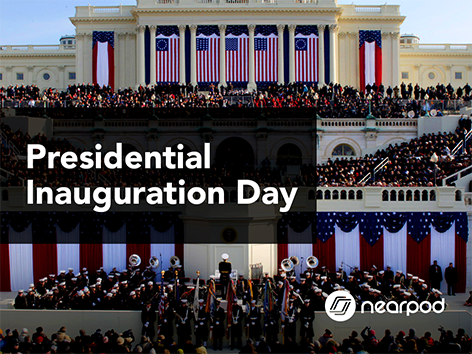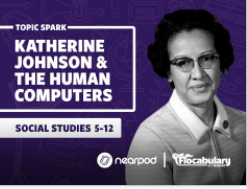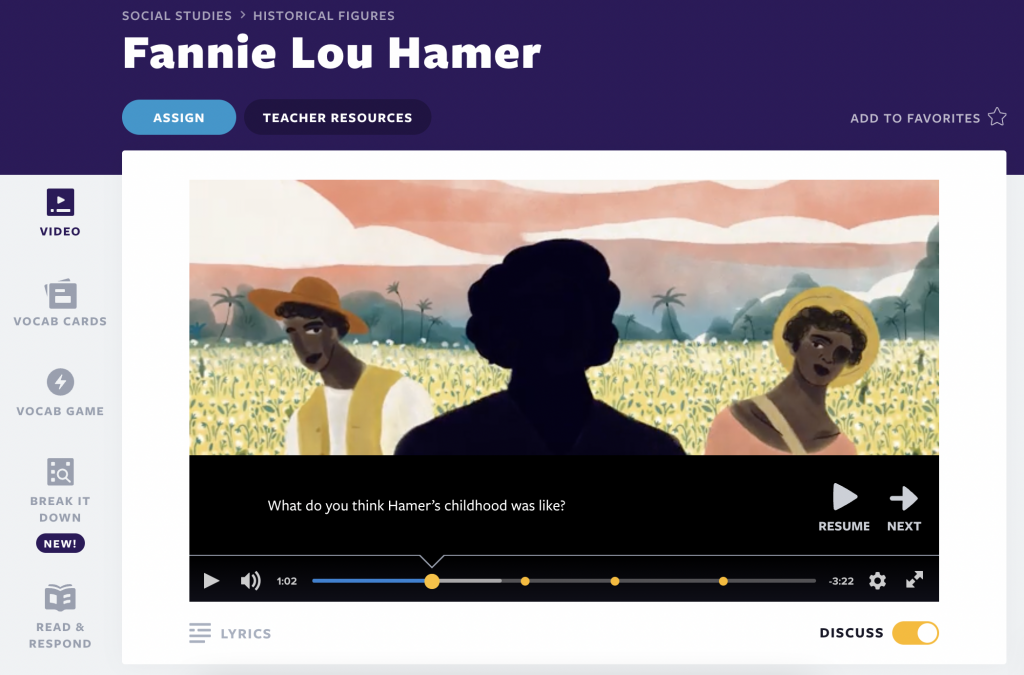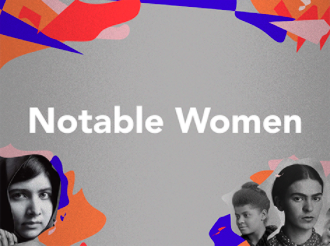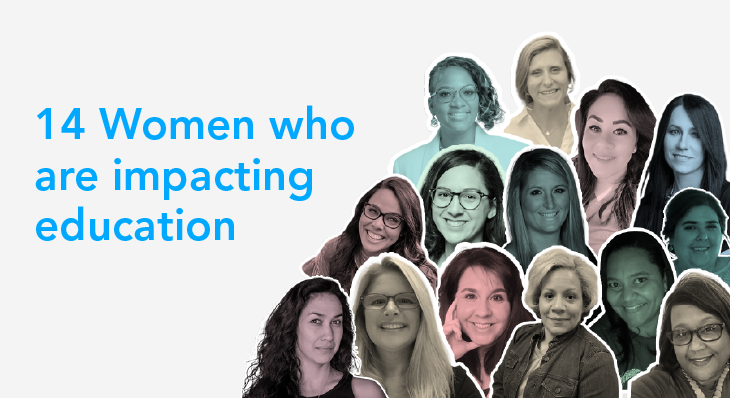
Teaching advice from 14 women impacting education
At Nearpod, we are always inspired by the passion, empathy, and innovation that women bring to their work. We’re humbled to have thousands of incredible women using Nearpod daily with their students.
Our PioNear community comprises a diverse group of educators working tirelessly to engage students and support other teachers. In honor of Women’s History Month, we’d like to spotlight some of the women in the Nearpod educator community whom we admire.
Learn about what these 14 women have accomplished and how they empower female students and represent female narratives in their instruction.
Meet the educators
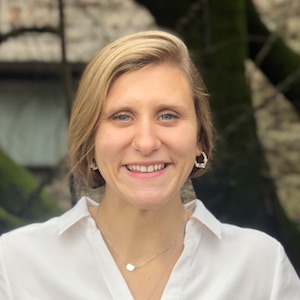
@KaliThompson2nd
Ph.D. student at The University of Georgia, former elementary teacher. In 2020, Kali had her first author paper accepted in a peer-reviewed journal.
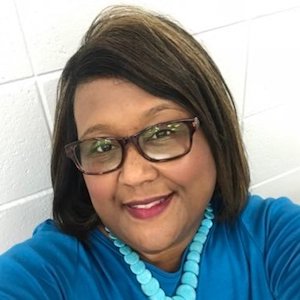
@itsrfleming
Instructional Technology Specialist in Georgia. Rosie is in the process of adding Gifted Certification to her teaching certificate and is a member of the Liberty Aspiring Leaders Academy.
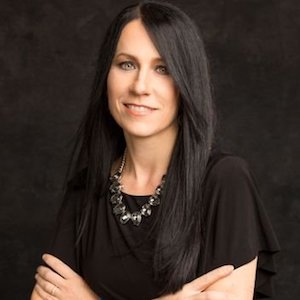
Spanish and STEAM Educator, Consultant, and Attorney. In 2020, Rachelle published her 4th and 5th books and became an ISTE Certified Educator.

McAllister
@mjmcalliwrites
Educator, author, and social media consultant. Melody published her first children’s book, “I’m Sorry Story,” and has shared it internationally.
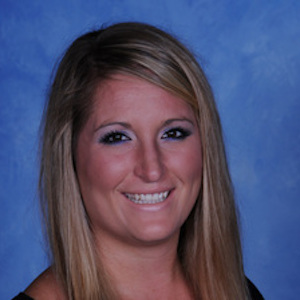
A science teacher in New Jersey, Jennifer, utilized all the Nearpod lessons she’s created throughout the year while teaching virtually.
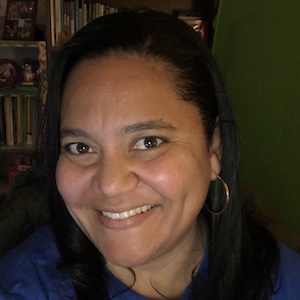
@CitiCoach
i4Coach at Hawthorne School in California. In 2020, Leticia started Tech.Teach.Grow, LLC., provides PD to teachers, parents, and administrators.
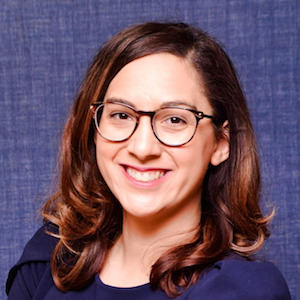
@MrsZ_STEMCoach
Dual Language STEM/Social Studies teacher and University Course Designer in Texas. In 2020, Coral started Austin Avanza, an affinity/equity group designed to amplify the voices of educators of color.
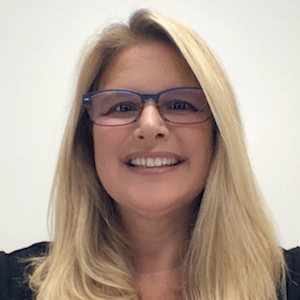
@smilelearning
Coordinator for Model Schools for WSWHE BOCES. Laurie was named one of CoSN’s Emerging EdTech Leaders in 2020.

@mc_thomas
Instructional specialist and equity influencer, Tiffanye was selected to serve on the panel for Education for American Democracy.
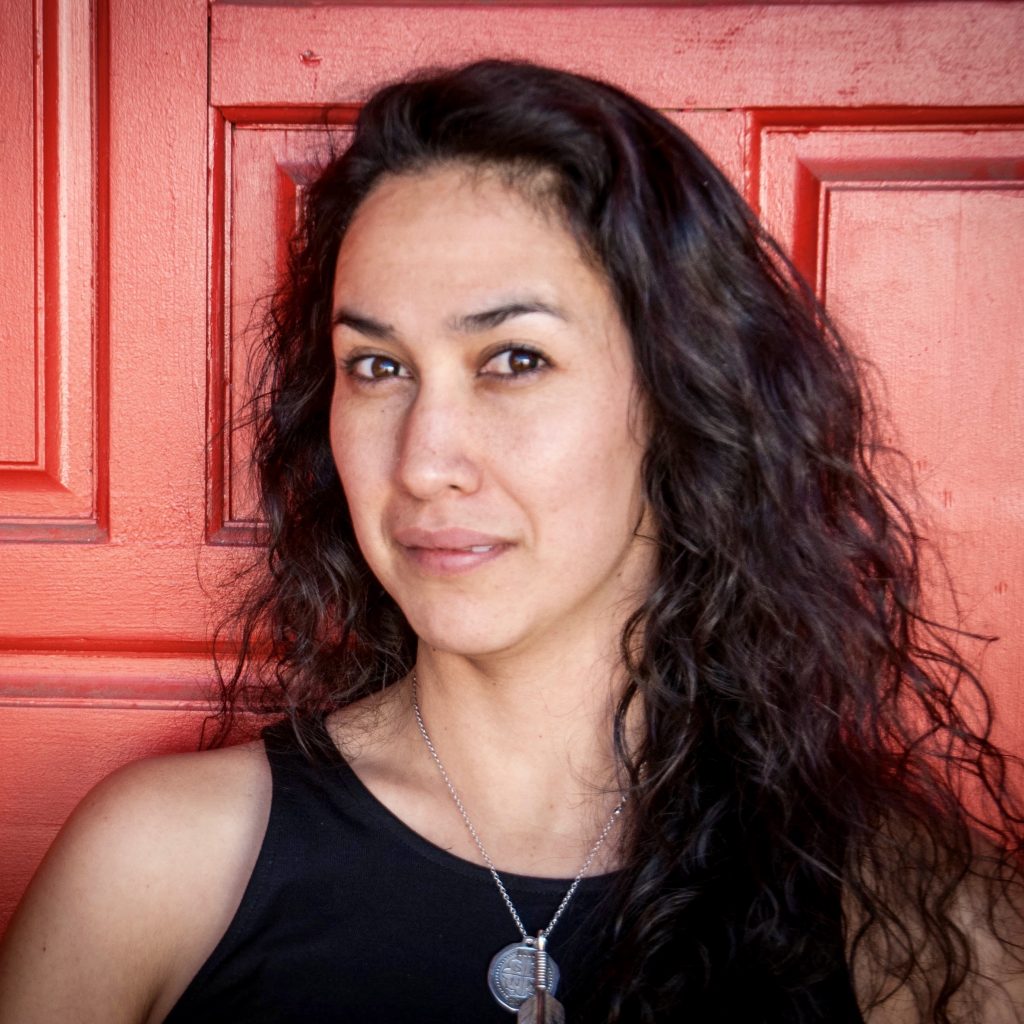
@collabgenius
Second-grade educator and TEDx speaker in Denver, Colorado. In 2020, Rachel was a finalist for Colorado Teacher of the Year.

A kindergarten teacher in California. Caitlin led a virtual summer Maker Camp, integrating STEM challenges and collaboration with students.
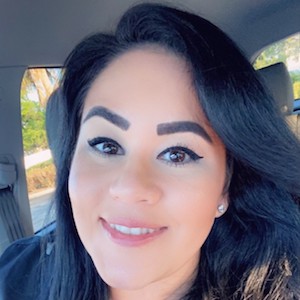
@msstuartssquad
A third-grade teacher in Broward Country, Florida. In 2020, Natalie became a Nearpod PioNear, and joined the #teachersoftiktok community with over 33k followers (@nattiemeetsworld).
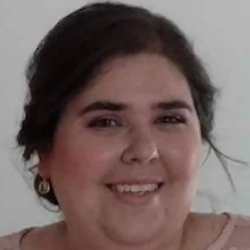
@SattlerCyber
7th-grade Cyber School Teacher Emily started The Cyber Sisters Podcast, where she and her co-host talk about cyber pedagogy.
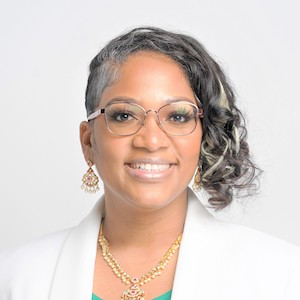
Singh
@SinghNBCT
Founder and CEO of LCT-E Learning Solutions, Michelle supports districts with remote learning plans, curated content, and webinars. She recently published a book, “Educational Continuity During Uncertainty: Online Learning Considerations for Educators.”
Tips for teaching Women’s History Month from women educators
When teaching about women’s history, what have you seen resonate with students?
New to Nearpod? Teachers can sign up for free below to access these resources, interactive activities, and engaging lessons. Administrators can schedule a call with an expert to unlock the full power of Nearpod for schools and districts.
Rosalind Franklin! Holy cow, how awesome was that woman. She died doing what she loved and discovered the structure of DNA. Students really love her story and they get upset by the fact that it took so long for her to be recognized. I love how passionate they become!
Jennifer Mohr-Murphy
I love to share the fight and plight of women starting with the works of Phillis Wheatley, the first published African American poet. Then I show the fight of Sojourner Truth at the 1851 Women’s Rights Convention with her speech “Ain’t I A Woman.” ..When we look at the strength, courage, boldness, hope, and faith of these women, we see our strength. We see our power. We see ourselves in them. This is what resonates with my students. This is how they see and find their value.
Michelle C. Singh
In Spanish, love teaching about Frida Kahlo, Isabel Allende, and in particular, Eva Peron. She fought for women’s suffrage and her impact on the lives of people in Argentina.
Rachelle Dene Poth
Right now, I’m looking around at LIVING HISTORY! We celebrated with joy when Kamala Harris was sworn in as VP. I wanted them to remember that they were watching history be made like I remember when the Berlin Wall came down. I never want them to forget this part of history and we are so excited for the first woman president who we hope is in 2024!
Melody McAllister
As a child, I was always in awe of Amelia Earhart and her lack of fear. It helped me to understand that you need to sometimes embrace the unknown in order to succeed. As an adult, I named my daughter after Abigail Adams because she was a pillar for change and fought for women and people of color to have the same opportunities.
Laurie Guyon
How do you empower female students in your classroom?
I empower my female students by letting them know about opportunities both inside and outside of my classroom/our school that they can take advantage of. It’s as much an information gap rather than an opportunity gap and making sure our students know there is a world of opportunities out there is critical to really let them dream and see themselves in new ways and roles for their future.
Coral Zayas
I am a huge advocate for STEAM education and try to infuse my curriculum and units with cross-curricular activities including coding and robotics. We know that men are the majority in STEM and computer science careers and my goal is to do my part in closing that gap and inspire and empower the girls in my class to pursue careers in STEM. I think the best way I can do that is by giving my Kindergarten students the exposure and opportunity to experience engaging STEM activities and projects including coding, and robotics within my classroom. Not only does is increase engagement and challenge my students to use higher level thinking, but it gives them experience and my hope is that it will spark interest to pursue it further!
Caitlin Arawaka
I make sure I am calling on students evenly, encouraging female students who are quiet to take the stage and use their voice to fill our learning space, provide numerous opportunities beyond writing and speaking for students to share their thoughts, ask students how they prefer to share and ways they like to create to share their voice and then provide them time to do so. I urge them to take leadership positions around campus based on what I have observed about and learned from them, and bring in females from varying fields, that I know interest my students, to speak and engage with my students.
Leticia Citizen
I always give examples of powerful, fearless women to my students to show them they can do anything. I also share my accomplishments and difficulties with them so they can relate or understand how challenges can be overcome! We chat about this with social and emotional learning discussions!
Natalie Stuart
What Nearpod or Flocabulary resources do you use to celebrate women’s history?
I love this Nearpod lesson about Katherine Johnson. I like to edit the activities and content just a little bit to make is appropriate for my Kindergarten students. I especially love the Flocabulary video and virtual field trip to Rocket Alley where the students can see a replica of one of the rockets Katherine Johnson helped launch and calculate the path.
Caitlin Arawaka
I love the Interactive Videos about women. They are impactful and offer diversity that is so important. You can share one a day throughout the month and really get learners thinking about the power of women in history.
Tiffanye McCoy-Thomas, PhD
My students and I use the discussion mode option for every Flocabulary video that is about a powerful female figure. We typically do this once a week in the month of March.
Natalie Stuart
There are a plethora of Nearpod and Flocabulary lessons that highlight phenomenal women. I particularly enjoy Malala Yousafzai, Sacagawea, and the most recent addition of Amanda Gorman’s Poetry. I appreciate that Nearpod can adapt and create powerful content in the moment.
Rachel Lamb
The lessons from the Notable Women bundle are fantastic to get students going and learning. I like it a lot because there are lessons about women in history students have never heard about. These women have changed and continue to impact us today. For example, Henrietta Lacks and Alice Paul.
Michelle C. Singh
How do you think we can better represent women and female narratives in instruction?
Leading by example. Being out front and being fearless. Just getting out there and doing it. Just not being afraid to fail. You never know what you can do until you try. If you fail, then you know you tried. We put too much emphasis on not failing and we should feel safe to fail. That is what we tell our students.
Rosie S. Fleming
We must reset our thinking in regards to who has made contributions to our world. Many of us carry with us the narrow view of changemakers from our childhood: Albert Einstein, Abraham Lincoln, Picasso. What about Buffalo Calf Road Woman, Sybil Ludington, Tammy Duckworth, and Claudette Colvin? This is not the time to let history books, written by the powerful, control what we teach. This is the time to peel back the layers of information that have been given to us since our youth and find fierce women stuffed in the crevices of history.
Rachel Lamb
I think March is a great time to go deeper into the contributions of women in our society. I grew up in a culture that said I was inferior to men, that I couldn’t and shouldn’t lead over men. That is garbage! Women are amazing leaders! We are different than men, of course, but we have proven that we are strong, be calm under pressure, make decisions that improve the life of the majority, and aren’t afraid of working hard.
Melody McAllister
We need to do a better job of representing women and the female narratives in our classrooms. This starts with looking at our curriculums. As an ancient World History teacher, I was teaching prehistory until the Middle Ages. I can count on one hand the number of women that I was “supposed” to teach in my curriculum. I tried to add in as many female narratives as possible to my lessons, which was easier said than done. Often times, I worked with my students to talk about why women weren’t represented in my classroom, which was because history was written by the men, so women weren’t a part of it.
Emily Sattler
We need to share the stories of women who have shaped our lives and our daily living. We need to showcase the creativity, ingenuity, and perseverance of women throughout time as inspiration. Our stories can foster connections. When we learn about others with the similar struggles and triumphs, we see the potential within ourselves.
Laurie Guyon
Share a quote in honor of Women’s History Month and why it’s special to you.
“I am not afraid of storms, for I am learning how to sail my ship.” – Louisa May Alcott
Kali Thompson
She is my favorite author. I think there is something really special about the way she writes about female friendship that I just connect with on a very personal level. Every time I read this quote I am reminded of how to be fearless, or to phrase that better, fear less.
“The question isn’t who is going to let me; it’s who is going to stop me.” – Ayn Rand
I love the power in this quote and love quotes in general. This quote was given to be on a personalized cuff by my dad.
Rachelle Dene Poth
“Empowered women empower women.”
This quote is special to me because I feel we need more women empowering each other, especially in these times. It is refreshing to see women support each other in businesses, friendships, relationships, etc. to help boost confidence!
Natalie Stuart
“When the whole world is silent, even one voice becomes powerful.” -Malala Yousafzai
Coral Zayas
This quote is important to me because far too often, people try to silence women and girls voices, finding and using our voices is one of the most powerful ways to boost self-confidence and helps us share our stories with the world. I truly do believe when one voice is powerful, but collectively we are far more powerful.
“Science is not a boy’s game, it’s not a girl’s game. It’s everyone’s game. It’s about where we are and where we’re going.” – Nichelle Nicholssi
I love this because it emphasizes the idea behind why science is such an important topic!
Jennifer Mohr-Murphy
How do you address difficult conversations about gender roles in the classroom?
I have always been an educator who believed that learners see through us. They know when we are not being authentic. So, even in difficult conversations, I allow them to open the door and serve as a facilitator to ensure respect and dignity are maintained, even when truth hurts. My experience is that years later they remember it and when they see me, even if there are no words, their expression is one of gratitude.
Tiffanye McCoy Thomas, PhD
Opening space for dialogue, allowing students to say what they need to say, and making sure that all students feel heard in those conversation.
Kali Thompson
Students need to feel safe and this type of environment has to be established and modeled by the teacher. The students need to know the teacher cares and they can see this with the effort the teacher puts into the content she creates and how she interacts with them. Nearpod allows this. The teacher creates dynamic and engaging lessons for students. The lessons provide interactivity, joy, and safe spaces for students to respond.
Michelle C. Singh
Common Sense Education has several lessons on Gender Roles. One in particular, Beyond Gender Stereotypes, I have used with my fifth graders. The lesson helps students to “think critically about how gender stereotypes can affect the ways they view themselves and others.” There are picture books that are available to allow students to redefine normal and challenge gender stereotypes. I have also partnered with our School Counselor and Psychologist.
Leticia Citizen
Everything is an equal opportunity. Somethings you might be built differently for but my favorite thing to say is “I’m built for this.” Whatever it is I am built for this – let’s go!
Rosie S. Fleming
Here is a list of more impactful women in education!

Nearpod’s award-winning platform is used by thousands of schools around the globe, transforming classroom engagement.

